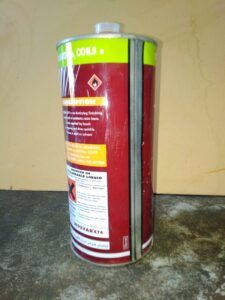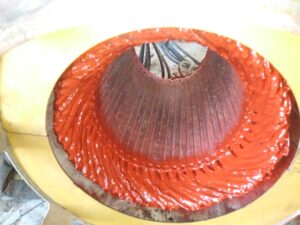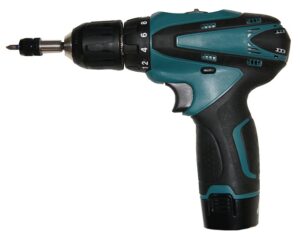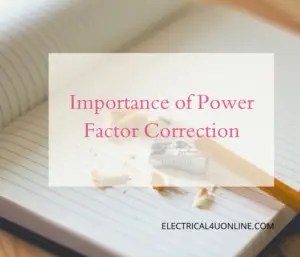Table of Contents
What does motor insulation Class mean?
Motor insulation class refers to a standardized system that categorizes the thermal tolerance of the insulation materials used in electric motors.
This classification is essential for ensuring the longevity and safe operation of the motor under various operating conditions.
Different motor applications require insulation systems that can withstand specific temperature ranges, which is why the insulation class is a crucial factor in determining the motor’s suitability for a particular environment.
The insulation class is typically denoted by a letter that signifies the maximum temperature the insulation can withstand. The most common insulation classes are:
- Class A: Maximum temperature of 105°C
- Class B: Maximum temperature of 130°C
- Class F: Maximum temperature of 155°C
- Class H: Maximum temperature of 180°C
- Class C: A specialized class with a maximum temperature of 220°C
When selecting a motor, it is essential to choose one with an insulation class that can handle the temperatures to which the motor will be exposed during operation.
Using a motor with an inappropriate insulation class can lead to premature insulation failure, which may cause the motor to malfunction or even result in a fire hazard.
Therefore, understanding the motor insulation class is crucial for ensuring the safe and efficient operation of electric motors in various industrial and commercial applications.
Why is Motor Insulation Class Important?
Motor insulation class is crucial for several reasons:
-
Temperature tolerance: Different motors operate at different temperatures, and the insulation class helps determine the maximum temperature a motor can handle before the insulation starts degrading. Operating a motor at a temperature higher than the specified insulation class can result in insulation failure, leading to reduced motor life or even motor failure.
-
Safety: Proper insulation ensures that the motor operates safely within the specified temperature range. Overheating due to inadequate insulation can lead to short circuits, electrical failures, and even fire hazards, which can endanger both the equipment and the surrounding environment.
-
Longevity and reliability: Insulation class directly impacts the longevity and reliability of the motor. Operating a motor within its specified temperature range ensures that the insulation remains intact and functional for an extended period, leading to reliable motor performance over its lifespan.
-
Efficiency: Maintaining the motor within its insulation class prevents overheating and energy losses. If the insulation fails, the motor might draw more current to compensate for the loss, leading to reduced energy efficiency and increased operational costs.
-
Compliance: Adhering to the appropriate motor insulation class is often a requirement for meeting industry standards and regulations. This ensures that the motor meets safety and performance standards set by regulatory authorities and industry bodies.
Understanding and adhering to the motor insulation class is crucial for ensuring the safe, reliable, and efficient operation of electric motors in various industrial, commercial, and residential applications.
Proper insulation class selection and maintenance contribute significantly to the longevity and performance of electric motors, preventing costly repairs, replacements, or safety hazards in the long run.
As we know, with the flow of current electrical conductor heats up, and if we don’t pay proper attention it can cause damage to the system.
How to determine motor insulation classes?
Given a motor with insulation class F running at 110°C, the pertinent inquiry is whether this temperature is excessive.
In simple terms, this motor’s temperature is well within the acceptable range. Here’s the breakdown:
Referring to the NEMA insulation class table, the maximum Temperature Rise for this motor is 105°C. Factoring in the ambient temperature of 40°C yields 145°C.
Typically, the motor surface is approximately 30°C cooler than the winding temperature. Hence, the motor’s winding temperature here amounts to 110°C + 30°C = 140°C.
Consequently, the motor operates 5°C below its maximum Temperature Rise (145°C) and 15°C below its maximum permissible winding temperature (155°C). Thus, despite the temperature reaching 110°C, the motor is not excessively hot.
For a motor featuring an F class insulation, the temperature rise is 105°C + 40°C, leading to a total of 145°C at service factor 1. Given that F-class insulation can tolerate a maximum temperature of 155°C, this motor possesses a 10°C buffer.
Furthermore, if we encounter a motor with insulation class F and a temperature rise of B, denoted as F/B, it signifies a temperature rise of 80°C + 40°C, summing up to 120°C. Comparing this with the maximum allowable temperature of 145°C, the motor exhibits a surplus of 145°C – 120°C, equating to 25°C.
Motor Insulation Class A, B, F, and H
Major and most commonly used motor insulation classes include A, B, F & H. However, N, R, and S classes are also in use.
| Class: A | 105 Degrees C |
| Class: B | 130 Degrees C |
| Class: F | 155 Degrees C |
| Class: H | 180 Degrees C |
Before we dive into details, you should be aware of the following:
- NEMA allowable rise (maximum permissible winding temperature). This is the maximum temperature that the winding can handle.
- maximum temperature rise, This is the maximum temperature rise that the motor generates at full load and a certain service factor.
- Temperature margin (or hot spot Over Temperature), This is the subtract of NEMA allowable rise and Winding maximum temperature rise.
Class A:
When the ambient temperature near a Class A insulated motor is approximately 60 degrees Celsius, the motor can operate effectively without any issues.
However, surpassing this temperature threshold adversely impacts the motor’s performance. It’s crucial to ensure that the motor windings do not exceed 105 degrees Celsius.
A protective buffer of 5 degrees Celsius above the 105 degrees threshold is allowed.
For Class A motor insulation:
- The maximum permissible winding temperature is 105°C.
- The Maximum Temperature Rise is 60°C.
- A 5°C safety margin is permitted.
- Class A insulation commonly employs dielectric materials such as silk, cotton, or paper.
Class B:
Regarding Class B motor insulation, the motor can withstand temperatures of up to 130 degrees Celsius, while the ambient temperature can reach as high as 80 degrees Celsius.
In this class, a 10-degree margin beyond the temperature limit is permitted, enabling the activation of the cooling system until the temperature exceeds the limit by 10 degrees.
Here are the specifications for Class B motor insulation:
- Maximum permissible winding temperature: 130°C.
- Maximum Temperature Rise: 80°C.
- Allowed spot over 10°C.
Class B insulation materials commonly include glass fiber, mica, and asbestos.
Class E:
When considering Class E insulation, it’s important to note that the motor can tolerate temperatures up to 75 degrees Celsius in the surrounding environment.
In this class, the motor functions optimally when the ambient temperature is around 75 degrees Celsius. However, it’s crucial to ensure that the motor windings do not surpass 120 degrees Celsius. Similar to Class A, there’s a protective threshold of 5 degrees Celsius beyond the 105-degree limit.
This indicates that for Class E motor insulation:
- The motor can tolerate an ambient temperature of 75 degrees Celsius.
- The maximum permissible winding temperature is 120°C.
- There’s a protective buffer of 5 degrees Celsius, akin to Class A, beyond the 105-degree threshold.
Motor insulation Class F
In the case of Class F insulation, the insulation is capable of withstanding winding temperatures of up to 155 degrees Celsius. Meanwhile, the permissible ambient temperature can reach up to 80 degrees Celsius.
Within this class, a 10-degree margin above the temperature limit is allowed. This provides the flexibility to activate the cooling system until the temperature surpasses the limit by 10 degrees.
The key specifications for Class F motor insulation are as follows:
- Maximum permissible winding temperature: 155°C.
- Maximum Temperature Rise: 105°C.
- Allowed Hot-spot Over Temperature: 10°C.
Class F insulation comprises various dielectric materials such as mica, asbestos, and glass fiber.
Class H
Concerning Class H insulation, the insulation is designed to endure winding temperatures of up to 180 degrees Celsius, with an allowable ambient temperature range of up to 125 degrees Celsius.
In this class, a 15-degree margin above the temperature limit is permitted, providing the flexibility to engage the cooling system until the temperature exceeds the limit by 15 degrees.
The essential characteristics of Class H motor insulation include:
- Maximum permissible winding temperature: 180°C.
- Maximum Temperature Rise: 125°C.
- Allowed Hot-spot Over Temperature: 15°C.
Class H insulation often involves the use of silicon elastomers in combination with materials such as glass fiber and asbestos as the dielectric material.
Read my other detailed articles:
Which insulation class is better?
Determining which insulation class is better depends on the specific requirements of the application and the environmental conditions in which the motor will operate.
Each insulation class is designed to accommodate different temperature ranges and environmental constraints. Here’s a general perspective on each class:
-
Class A and B: These classes are suitable for applications with relatively lower temperature requirements. They are commonly found in light-duty applications and some household appliances.
-
Class E: This class offers better thermal endurance compared to Class A and B, making it suitable for applications where the motor is exposed to higher temperatures.
-
Class F: With a higher temperature tolerance compared to the previous classes, Class F is suitable for more demanding industrial applications where the motor is subjected to high temperatures and heavy-duty operations.
-
Class H: Providing the highest temperature resistance among the standard insulation classes, Class H is ideal for extremely high-temperature environments and heavy-duty industrial applications where motors are exposed to severe conditions.
The ‘better’ insulation class depends on the specific needs of the application. For instance, if a motor is operating in an environment with high temperatures, choosing a class with a higher temperature tolerance, such as Class F or H, would be more suitable.
However, selecting an insulation class that exceeds the requirements of the application might lead to unnecessary costs. It’s crucial to match the insulation class with the specific environmental and operational conditions to ensure optimal performance, longevity, and safety of the motor.
Every motor has its own range of temperature during its operation. This is called motor temperature rise.
The higher the difference between the motor rise and the insulation temp. the longer the motor life, but also the higher the price of the motor.
- allowable temperature rises at full load and 1.0 S.F.
| A= | 60°C |
| B= | 80°C |
| F= | 105°C |
| H= | 125°C |
- NEMA allowable temperature rises For a 1.15 S.F. motor
| A= | 70°C |
| B= | 90°C, |
| F= | 115°C. |
| NEMA Insulation Temperature Ratings | Motor Temperature Rises | ||||
| 1.0 SF | 1.15 SF | ||||
| Insulation Class | Temperature | Ambient | Hots pots | Rise | Rise |
| A | 105 | 40 | 5 | 60 | 70 |
| B | 130 | 40 | 10 | 80 | 90 |
| F | 155 | 40 | 10 | 105 | 115 |
| H | 180 | 40 | 15 | 120 | — |
How to measure electric motor insulation resistance?
To perform insulation resistance for a motor you need a high resistance range ohmmeter, DC voltage of 500 to 1000V is applied between winding and motor body the reading should be in mega-ohm (1MOhm and larger is accepted).
This process is widely known as MEGGER a motor. I have written a detailed article about How to megger a motor? Check it out.
How do I choose an insulation Class for a motor?
Based on the temperature, you may choose a motor Insulation Class. Actually, the class of the insulation type is already written on the motor.
Instead of choosing the insulation class temperature, we need to observe the ambient temperature of the place where we need to set the motor.
For example, If the sum of ambient temperature and motor temperature is within or equal to the range of an Insulation Class, you can use it.
Let’s take a hypothetical the ambient temperature is 40 degrees Celsius. And the motor is in use generates 50 degrees Celsius. Then it is OK to use a Class A insulation class motor. This Section will become clearer through the motor insulation class chart.
Motor Insulation Chart
| Class | Maximum Operation allowance Degree Celsius | Maximum Operation Allowance Degree Fahrenheit | Allowable Temperature at Service factor 1.0 Degree Celsius | Allowable Temperature at Service factor 1.5 Degree Celsius |
| A | 105 | 221 | 60 | 70 |
| B | 130 | 266 | 80 | 90 |
| F | 155 | 311 | 105 | 115 |
| H | 180 | 356 | 125 | 115 and above |
What is motor Insulation Varnish?

Motor insulation varnish refers to a protective coating applied over conductors to enhance insulation and safeguard them from short-circuits.
Possessing favorable chemical, electrical, thermal, and electrochemical properties, this insulation varnish is akin to a paint or epoxy material poured over motor, transformer, and generator windings to prevent shorting.
Its composition typically includes pigment, base material, curing agent, filler, solvent, and flame retardant, with various resins constituting the base material.
In our practice, we utilize this varnish to fortify motor and generator windings during the repair of damaged units.
It bolsters winding protection against moisture and temperature fluctuations. Additionally, we incorporate varnish into the annual preventive maintenance routine for motors and generators.
There are two primary types of motor varnishes:
- Impregnating Varnish: It comes in two variants, namely, solvent-free varnish and varnish with solvent. Physical properties resemble that of paint, offering excellent fluidity, rapid curing, strong bonding force, high RPM tolerance, and exceptional electro-thermal and low viscosity characteristics. The use of this varnish type is further delineated across different levels.
- Cover Varnish: Employed for coating immersed conductors like coils and windings, cover varnishes safeguard the conductors against erosion, mechanical stress, and electrical damage. Selection of varnishes is contingent upon the motor’s class and temperature range.
Can I use wood varnish as motor varnish?
Using wood varnish as a substitute for motor varnish is not advisable. While both types of varnishes are designed to provide protection, they serve very different purposes and are formulated for distinct applications. Here are some reasons why wood varnish should not be used as a replacement for motor varnish:
- Electrical properties: Motor varnish is specifically designed to possess excellent electrical insulation properties, ensuring that the conductors are adequately insulated and protected from electrical hazards. Wood varnish lacks the necessary electrical insulation properties required for safeguarding the delicate electrical components within a motor.
- Thermal resistance: Motor varnish is engineered to withstand high temperatures generated by the motor during operation. Wood varnish may not have the same heat resistance capabilities, and using it in a high-temperature environment, such as inside a motor, can lead to varnish degradation, resulting in potential electrical failures and safety hazards.
- Environmental protection: Motor varnish is formulated to protect motor windings from moisture, chemicals, and other environmental factors that could potentially damage the motor’s internal components. Wood varnish is not designed to provide the same level of protection against these environmental stressors.
- Compatibility: Motor varnishes are specifically manufactured to be compatible with the materials used in motor construction, ensuring proper adhesion and protection. Wood varnish may not adhere properly to the materials inside a motor, leading to issues such as flaking, cracking, or reduced insulation effectiveness.
Using the appropriate type of varnish is crucial for ensuring the safety, reliability, and longevity of the motor.
It is always recommended to use varnishes that are specifically designed and approved for use in electrical applications when dealing with electric motor maintenance and insulation.

Does motor varnishing really increase insulation?
Yes, motor varnishing plays a crucial role in enhancing and maintaining the insulation of electrical conductors and components within a motor.
When applied correctly, motor varnish serves several important functions that contribute to improved insulation:
- Electrical insulation: Motor varnish creates a protective layer that effectively insulates the conductors from each other and from the motor’s core. This insulation layer prevents current leakage, short circuits, and other electrical malfunctions that could potentially damage the motor.
- Protection from environmental factors: Varnishing provides a barrier against moisture, chemicals, dust, and other environmental contaminants that could compromise the integrity of the motor’s insulation. By sealing the motor windings and components, varnishing helps prevent the degradation of insulation due to exposure to harsh environmental conditions.
- Thermal insulation: Motor varnish contributes to the thermal insulation of the motor, helping to dissipate heat efficiently and maintain a stable operating temperature. Proper insulation helps prevent overheating, which can lead to insulation breakdown and motor failure.
- Mechanical protection: Varnishing also provides a protective layer that helps shield the motor windings from mechanical stresses, such as vibrations and physical impacts, which could otherwise damage the insulation and lead to electrical faults.
Overall, motor varnishing is an essential process in the maintenance and protection of electric motors, ensuring that they operate reliably and efficiently.
It helps to extend the lifespan of the motor by preserving the integrity of the insulation, reducing the risk of electrical failures, and enhancing the motor’s overall performance and safety. I, in my work, use varnish to increase electrical motor insulation, as well as generator insulation.
Does motor varnish increase its temperature?
The motor varnish itself does not directly increase the temperature of the motor. In fact, one of the primary functions of motor varnishing is to help dissipate heat efficiently and maintain the motor’s operating temperature within acceptable limits.
Proper varnishing ensures that the motor windings and components are effectively insulated and protected, allowing the motor to function optimally without overheating.
The application of motor varnish is crucial for maintaining the insulation integrity and preventing the build-up of heat within the motor. By providing a protective layer over the conductors and components, varnishing helps to enhance thermal insulation and protect the motor from temperature-related issues.
However, it is essential to apply the appropriate amount of varnish in a controlled manner during the varnishing process. Excessive or uneven application of varnish can lead to insulation problems and hinder the dissipation of heat, potentially resulting in increased operating temperatures and reduced motor performance.
Overall, when applied correctly, motor varnish serves to maintain the motor’s temperature within the specified operating range, ensuring efficient operation and extending the lifespan of the motor.
For more details about, How does temperature rise affect electrical devices? Read my article.
Why is insulation have paper backing?
Motor insulation often includes a paper backing for several crucial reasons related to its functionality and application within the motor:
- Dielectric strength: Paper offers excellent dielectric strength, making it an effective material for providing insulation in electric motors. It helps prevent the flow of electric current between the conductors and other motor components, minimizing the risk of short circuits and electrical malfunctions.
- Mechanical support: The paper backing provides mechanical support to the insulation system within the motor. It helps maintain the structural integrity of the insulation, preventing damage or deformation that could occur during the manufacturing, installation, or operation of the motor.
- Thermal endurance: Paper has relatively good thermal endurance, allowing it to withstand the operating temperatures typically encountered in electric motors. The paper backing helps to dissipate heat and maintain the insulation’s stability, preventing overheating and insulation breakdown.
- Compatibility with varnishes and resins: Paper is often compatible with the varnishes and resins used in the motor insulation process. It facilitates the impregnation and bonding of the insulation materials, ensuring a secure and reliable adhesion that contributes to the overall insulation effectiveness of the motor.
- Cost-effectiveness: Paper backing is often a cost-effective option for motor insulation, providing a balance between insulation performance and affordability. It allows for efficient manufacturing processes and can be easily integrated into the overall motor construction without significantly increasing production costs.
In summary, the use of paper backing in motor insulation contributes to improved dielectric strength, mechanical support, thermal endurance, compatibility with varnishes and resins, and cost-effectiveness, all of which are essential for ensuring the reliable and efficient operation of electric motors.
What Motor Insulation is Inverter Duty?
Inverter Duty is not a specific insulation class but rather a designation that refers to motors specifically designed to handle the unique demands and challenges posed by inverter drive systems.
Inverter Duty motors are engineered to withstand voltage spikes, harmonics, and rapid voltage changes that are characteristic of the output from variable frequency drives (VFDs) or inverters.
These motors are typically constructed with special insulation systems that provide superior thermal and dielectric properties, allowing them to endure the increased voltage stress and higher operating temperatures associated with the use of VFDs.
While Inverter Duty motors can be manufactured with various insulation classes, they often use insulation materials that offer higher temperature resistance and enhanced thermal endurance to ensure reliable performance under the conditions created by the VFDs.
The insulation class of an Inverter Duty motor can vary depending on the specific requirements of the application, the type of VFD being used, and the operating environment. Common insulation classes used for Inverter Duty motors include Class F and Class H, as these classes offer the necessary thermal capabilities to withstand the heat generated by the frequent switching and rapid voltage changes associated with VFDs.
When selecting an Inverter Duty motor, it is essential to consider the specific requirements of the application and ensure that the motor’s insulation class is compatible with the VFD’s output and the operating conditions to guarantee reliable and efficient performance.
For more information, read my articles:
Install my Free Android App on Google Play:
Electrical Cables Most Common Tables “Electrical Cables Tables”
And, my Electrical Calculations App “Fast Electrical Calculator”
Discover more great content by subscribing to My channel
Looking to stay ahead of the game in the world of electrical engineering? Subscribe to my YouTube channel and gain access to exclusive content you won’t find anywhere else!
The staff I recommend
(Amazon Affiliate Links to products I believe are high quality):
- Economy 120 Volt/60Hz AC Power Source – Step-Down Voltage & Frequency Converters 1800W
- UNI-T Digital Multimeter Tester UT139C
- 50-Amp Extension Cord for RV “100ft”
- Voltage Stabilizer 110/220v
- Hair Dryer “best selling“
- TOSHIBA EM131A5C-BS Countertop Microwave Ovens
Disclaimer: This contains affiliate links to Amazon products. I may earn a commission for purchases made through these links.


